Introduction to power supply cable computer
Power Supply Cable Computer are fundamental components in maintaining the stability and functionality of a computer system. Without them, the seamless operation of various hardware components would be compromised.
These cables have various shapes and sizes. They are designed for different connections in the system. These connections include the motherboard, hard drives, and peripherals.
Moreover, the proper functioning of a computer heavily relies on the presence of these cables and their secure connections. Even a minor issue in this aspect can lead to significant disruptions in performance. Therefore, ensuring you select and properly install the correct power supply cable computer is paramount. Not merely a matter of convenience but a necessity for optimal functionality.
Furthermore, adherence to the wattage requirements specified by the system is crucial. Failure to meet these requirements can result in power shortages, potentially leading to hardware malfunctions or damage. Thus, users must diligently assess their system’s power needs and choose cables that align with those specifications accordingly.
Additionally, the quality of these power supply cable computer is of utmost importance. Good cables are important for reliable power and a long-lasting, efficient system. Conversely, low-quality cables may introduce unnecessary risks and compromises in performance.
Moreover, we cannot overstate the importance of cable management. Organized cables improve the look and airflow of the system. This, in turn, contributes to better cooling and, consequently, improved performance and longevity of the hardware components.
we cannot emphasize enough the importance of power supply cable computer in a computer system. From ensuring proper power delivery to enhancing system aesthetics and longevity, these cables are necessary. Users must carefully consider factors such as cooperative, wattage requirements, build quality, and cable management to ensure an optimal computing experience.
Power Supply Cables: Heart Of Your Computer
Electrical lifelines pulse through your computer. Just as the heart pumps blood to keep you alive, power supply cable computer energize every component. Without these components, your computer will not function.
These cables transfer power from the PSU to the motherboard, hard drive, and graphics card, ensuring they function properly. Understanding their role is crucial for a healthy PC.
The Role Of Cables In A Pc
Imagine a city without roads. That’s a computer without proper power supply cable computer. Power supply cables are responsible for:
- Energy delivery to each part of your computer.
- Helping parts communicate correctly.
- Maintaining stability and performance.
Each cable plugs into a specific spot, like puzzle pieces. Correct connections mean everything runs smoothly.
Signs Of A Failing Power Cable
Identifying a faulty power cable is crucial. Here’s what to look out for:
- Unexpected shutdowns – This can leave you frustrated.
- Power struggles – Is your PC sometimes unable to start?
- Smells or burns – These are urgent warning signals.
- Noisy operations – A fan operating more vigorously than usual.
If you notice these signs, act fast to avoid damage. Replacing a defective cable can protect your computer from damage.
Cable Types And Their Functions
Building or upgrading a computer? Cables play a vital role. From power to data, different cables have unique roles.
This section breaks down the types and functions of power supply cable computer. Power your computer effectively and safely with the right cable knowledge.
Atx Power Cables
ATX power cables are the lifelines of a computer’s motherboard. These cables come standard in two types:
- 24-pin main connectors: These supply power to the motherboard.
- 4 or 8-pin CPU connectors: They provide power to the central processing unit (CPU).
Without these, your computer won’t start. Make sure to connect them snugly for the best performance.
Pcie Power Cables
Graphics cards require PCIe power cables to function properly. They come in 6-pin and 8-pin varieties.
- 6-pin – 8-pin
Provides up to 75W – Provides up to 150W
They plug directly into your graphics card, supplying extra power needed for demanding tasks.
Peripheral Cables
Peripheral cables power devices inside and outside your computer. They include:
- Molex connectors for older HDDs and fans.
- SATA power cables we call power cables used for modern hard disk drives (HDDs) and solid-state drives (SSDs) SATA power cables.
Key Considerations When Choosing Power Cables
Choosing the correct power cable is important for a computer’s reliable and efficient performance. Choosing the correct power supply cable computer for your computer is crucial for both its performance and safety. This applies whether you are constructing a new PC or enhancing your existing system. Important factors to consider when choosing power cables for your computer setup.
Congruence With Power Supply And Components
Before you buy a power supply cable, make sure it works with your power supply unit (PSU) and other parts. Check the specifications provided by the PSU manufacturer to determine the type and connectors required for your specific system.
Additionally, Check that the power supply cable computer can support your graphics card, motherboard, and storage devices. You wouldn’t want it to provide excessive power to any component and create issues.
Cable Length And Management
The length of the power supply cable computer for your computer is of paramount importance, as it directly influences both the visual appeal and operational efficiency of your system’s interior.
Choosing cables of the appropriate length is essential to maintain a neat and organized appearance within your computer case, while also ensuring sufficient airflow around its components.
Consequently, it’s imperative to select cables that strike a balance—long enough to reach your components comfortably, yet not excessively lengthy to the point of being unwieldy or difficult to manage.
Moreover, effective cable management serves not only to enhance the aesthetics of your setup but also to optimize airflow dynamics. By arranging cables in a tidy manner, you not only achieve a cleaner and more organized look but also promote better air circulation throughout the case. This optimized airflow plays a crucial role in regulating operating temperatures within your computer, thereby contributing to improved performance and longevity of its components.
In summary, the length of your power supply cable computer serves as a key determinant in shaping both the appearance and functionality of your computer setup. Finding the right balance between cable length and manageability is essential to achieve a visually pleasing layout and ensure optimal airflow, ultimately resulting in enhanced system performance and reliability.
#StarTech.com 6ft (2m) Computer Power Cord

About this item
·AC POWER CABLE: This 6-foot (1.8-meter) flexible computer power cable, equipped with Flat NEMA 5-15P and IEC 60320 C13 connectors, is ideal for use in workstations and home offices. It’s rated to carry 125 volts at 10 amps.
·PERFORMANCE AND SAFETY: UL listed (UL62 & UL817) | Fully molded strain relief connectors for durability | 3 Conductor Power Cable made from 100% Copper Wire | Fire Rating: VW-1
·SPECS: 6ft (1.8m) Power Cable | Flat NEMA 5-15P to IEC 60320 C13 | 18AWG | 125V 10A (Max) | Jacket Rating: SVT | Jacket Material: PVC | Color: Black | Temperature Range: 37°F to 140°F (3℃ to 60℃) | Cable Outer Diameter: 0.25in (6.1.8mm)
·COMPATIBILITY: Flat NEMA 5-15P works with North American electrical outlets | IEC C13 connector works with most desktop computers, and many monitors, scanners, printers, and more | Replacement PC power supply cable/cord.
·THE IT PRO’S CHOICE: Crafted for IT Professionals, this computer power cord comes with a lifetime warranty, along with complimentary 24/5 multilingual technical support. Additionally, this C13 power cord is offered in various lengths.
Gauging Cable Quality
power supply cable computer are critical components in computer systems. The right cable can mean the difference between stable operations and unexpected shutdowns. As with any component, assessing the quality of the power supply cable computer is essential.
A high-quality cable ensures durability, efficient power delivery, and safety. Let’s explore the material choices and gauge considerations crucial for top-notch cables.
Material Matters: Copper Vs. Aluminum
Selecting the right material for a power supply cable computer is vital. Copper and aluminum are the most common conductive materials used. Each has its advantages.
- Copper: Known for its excellent electrical conductance. It exhibits greater flexibility and heat resistance.
- Aluminum: Lighter, less costly but not as conductive as copper. More susceptible to oxidation.
Copper often stands as the preferred choice. It guarantees consistent energy flow and longevity. Ensure the cable has ample copper content for optimal performance.
Understanding Cable Gauges
power supply cable computer gauges indicate the thickness of a cable’s internal wire. Thicker wires can carry more current without overheating.
Add more rows as needed
- Gauge Number (AWG) Current Capacity
- 18 AWG – Up to 10 amps
- 16 AWG – Up to 13 amps
- 14 AWG – Up to 17 amps
Lower gauge numbers mean a thicker power supply cable computer. Select a gauge that aligns with the power requirements of your computer system.
Consider a thicker gauge for better efficiency and safety. A thicker cable handles more power and resists damage better.
Cable Management For Aesthetics And Airflow
A well-organized power supply cable computer setup in a computer not only looks good but also boosts performance. Proper cabling helps maintain optimal airflow, keeping components cool. Let’s explore how neat cable management can enhance your system’s look and functionality.
Routing Techniques For Neatness
Great cable routing makes the inside of a computer tidy and attractive. Use these techniques for best results:
- Use Cable Ties: Secure cables together and out of the way.
- Stick to Edges: Route cables around the sides to reduce clutter.
- Hide Behind Components: Tuck wires behind motherboards and drives.
Special power supply cable computer routing cutouts in cases help. They guide wires neatly behind the motherboard tray.
Improving Airflow With Organized Cabling
Tidy power supply cable computer extends beyond aesthetic considerations. Vital for good airflow, preventing overheating. Here’s how:
- Technique Benefit
- Group Similar Cables – Reduces air blockages
- Use Shorter Cables – Less clutter for air to pass through
- Secure Loose Wires – Improves direct airflow to components
Always ensure that the cables do not touch fans or heat sinks. Organized cables help fans work more efficiently.
Modular Vs. Non-modular PSUs
Selecting the right PSU (Power Supply Unit) is crucial for any computer build. PSUs come in two styles: modular and non-modular. Modular PSUs offer flexibility in cable management, while non-modular PSUs come with all power supply cable computer permanently attached. Understanding the difference helps in making an informed decision that aligns with individual needs and builds requirements.
Benefits Of Modular Power Supply Cable Computer
- Enhanced Airflow: Less cable clutter allows for better air movement inside the case.
- Custom Cable Management: Users can choose which cables to include, aiding in a cleaner setup.
- Upgradability: Easier to swap cables for future upgrades or replacements.
- Improved Aesthetics: Minimalist interior appeal, perfect for windowed cases.
When Non-modular Cables Make Sense
Non-modular PSUs Ensure that all cables are connected from the beginning. This might seem less flexible, but has its advantages:
- Advantage – Description
Cost-Effective: Generally cheaper than their modular counterparts, offering essential functions without the extra frills.
Simplicity: Ideal for basic computer builds that do not require extensive personalization.
Reliability: Fewer connections can mean fewer potential points of failure within the cable management system.
#StarTech.com 6ft (1.8m) UK Computer Power Cable

About this item
·AC POWER CABLE: This flexible computer power cable, measuring 6 feet (1.8 meters) and made with 18AWG (0.75mm2) wire, features BS 1363 and IEC 60320 C13 connectors, ideal for workstation or home office setups. Designed to handle up to 250 volts at 10 amps.
·PERFORMANCE AND SAFETY: Constructed with durable fully molded strain relief and VDE-approved connectors, this power cable boasts a 3 Conductor design crafted entirely from 100% copper wire. Additionally, it carries a VW-1 fire rating, ensuring optimal safety and reliability.
·SPECS: The power cord has a length of 6 feet (1.8 meters) and features connector types from BS 1363 to IEC 60320 C13. It is constructed with a wire gauge of 18AWG (0.75mm2) and boasts a maximum voltage and current rating of 250V 10A. The jacket is rated H05VV-F and crafted from PVC material, presenting a sleek black color. Its operational temperature range spans from 3°C to 60°C, while the cable’s outer diameter measures 6.8mm.
·COMPATIBILITY: BS 1363 aligns with the electrical outlets commonly found in the United Kingdom. The IEC C13 connector is compatible with a wide range of devices including desktop computers, monitors, printers, and more. Consider using a Replacement PC power supply cable or Kettle Lead.
·THE IT PRO’S CHOICE: This computer power cord, tailored for IT Professionals, comes with a lifetime warranty, offering free lifetime 24/5 multi-lingual technical support. Additionally, this UK power cord is offered in various lengths.
Optimizing Power Distribution Of Power Supply Cable Computer
power supply cable computer play a crucial role in delivering stable and reliable power to your computer components. People often forget about the quality of these cables, but it matters for how well your system works and how long it lasts. This article looks at how cable quality affects power delivery, especially in preventing electrical failures and impacting overclocking potential.
Role In Preventing Electrical Failures
A poor-quality power supply cable computer for your computer can trigger numerous electrical failures within your system. Consequently, these failures may manifest as system crashes, component damage, or even data loss. One of the primary contributors to such failures is the resistance exhibited by the cables. In contrast, high-quality cables boast low resistance levels, facilitating efficient power delivery and reducing the occurrence of voltage drops.
Moreover, a dependable power supply cable computer for your computer ensures adequate insulation and shielding, thereby safeguarding your components against electrical interference and overloading. By utilizing a superior-quality power supply cable computer, the risk of computer damage resulting from short circuits, static electricity, and other potential hazards is significantly diminished.
Influence On Overclocking Potential
For overclocking enthusiasts constantly seeking to maximize hardware performance, the quality of the power supply cable for their computer is paramount. High-quality cables provide consistent power to overclocked components, thereby enhancing stability and facilitating performance enhancements.
When engaging in overclocking activities, having a reliable power supply cable for your computer becomes indispensable. Such cables must be capable of delivering sufficient power at stable voltages to support the increased electrical demands. In contrast, utilizing cheap or subpar cables may result in difficulties handling the amplified electrical load, leading to voltage fluctuations and instability. Consequently, this instability can manifest as system crashes, slowdowns, and potential hardware damage.
Efficient optimization of power distribution within your computer setup is essential for ensuring consistent performance. In this regard, your power supply cable for the computer assumes a pivotal role. By leveraging effective power distribution strategies, you can maximize the potential of your system, thereby achieving optimal performance and reliability.
Balancing Load Across Cables
Achieving an optimal balance is essential. Excessive load on a single cable may lead to complications. Spread out the power demand. This can prevent overheating and promote the longevity of components.
- Check PSU rails. Ensure that you are utilizing all accessible rails.
- Divide devices. Avoid overloading a single cable with multiple devices.
- Even distribution. Connect high-power components separately.
Avoiding Common Connection Mistakes of Power Supply Cable Computer
Connection mistakes can lead to malfunctions. They have the potential to cause harm to your system.
- Don’t mix cables. Using cables from different PSUs can be harmful.
- Secure connections. Loose cables cause power disruptions.
- Correct placement. Connecting to the appropriate ports is imperative.
Impact Of Cable Length On Performance
To build or upgrade a computer, power supply cable computer are crucial. They might seem like a small component, but they can have a huge effect on your system’s performance. Cable length affects power efficiency and cable management in the computer case.
Shorter Vs. Longer Cables
The debate between shorter and longer power supply cable computer is always ongoing among computer enthusiasts. Shorter cables can reduce voltage drops, ensuring that components receive full power. This can improve the performance of your system. Longer cables are more flexible for installation in huge cases, but they can cause more resistance and heat buildup.
- Short cables: Minimize power loss and improve airflow
- Long cables: Offer easier routing in large cases
Custom Cable Solutions
If off-the-shelf cables don’t meet your needs, custom cable solutions are available. These power supply cable computer enhance both performance and aesthetics by tailoring them to your system’s specific length requirements. A perfect fit means optimized power delivery and a clean look.
- Measure: Determine the exact length needed for your setup.
- Choose: Select colors and sleeving for personalized style.
- Order: Obtain cables made to your specifications.
The right power supply cable computer length for your system improves performance and makes your build look neater and more organized. Choosing custom power supply cables means opting for a system that runs efficiently and looks great.
#Tripp Lite Standard Computer Power Cord 10A

About this item
·NEMA 5-15P to IEC-320-C13 adapter
·10A replacement power cable suitable for PCs, printers, or monitors with compatible plugs
·UL Listed and RoHS-compliant
·Lifetime warranty provided
·3-foot replacement power cable suitable for various devices like PCs, printers, monitors, etc.
·UL-listed and CSA-approved
·Plug Type: NEMA 5-15P (AC) to IEC-320-C13 (device)
·18AWG (0.824mm²), SJT, 10A, 125V
·Tripp Lite guarantees this product to be free from material and workmanship defects for life
·3-foot replacement power cable compatible with PCs, printers, monitors, or similar devices
·UL-listed and CSA-approved
Connectors: Ensuring A Stable Connection
Connectors play an indispensable role in facilitating the functionality of your computer’s power supply cable computer, ensuring a stable and reliable connection between the power supply unit (PSU) and various components within the system. This stable connection is paramount for consistent power delivery and maintaining system stability. Thus, having a comprehensive understanding of the different connectors and properly securing them is crucial for ensuring the optimal performance of your PC.
To begin with, it’s essential to identify the various connectors available, each characterized by distinct shapes and sizes, and ensure their compatibility with your computer’s motherboard and components.
The primary motherboard power connector is the 24-pin ATX, responsible for supplying power directly to the motherboard. Additionally, the 8-pin EPS connector serves as an additional power source specifically for the CPU, enhancing its performance.
For peripherals such as graphics processing units (GPUs) and expansion cards, the power supply utilizes the 6+2-pin PCIe connector, enabling their operation and ensuring sufficient power supply cable computer delivery.
In terms of storage devices and accessories, the SATA connector plays a crucial role, providing power to hard drives and SSDs, thus facilitating their functionality within the system.
Lastly, the Molex connector, although considered a legacy peripheral power supply cable computer, still serves a purpose, often powering older devices or providing supplementary power to fans within the system.
In summary, each connector type serves a distinct purpose in ensuring the efficient operation of your computer system. By understanding the role of each connector and properly securing them, you can optimize power delivery, enhance system stability, and ultimately ensure the smooth functioning of your PC.
Secure Your Connections For Stability
The proper connection secures the power flow and system stability. Loose connectors can cause power interruptions or damage components.
- Align the connector with the port carefully.
- Apply even pressure until you hear a click.
- Ensure that the connection is snug with no noticeable movement or looseness.
- Use cable ties to manage and support cables.
To avoid power issues, never force a connector into a port. If the connector does not fit, probably, it is not the appropriate connector for that port. Use cable ties to keep power supply cable computer organized and in place, which helps airflow and prevents accidental disconnections.
Custom Sleeved Cables: Style Meets Function
Imagine a computer where every detail reflects your style. Custom-sleeved cables combine aesthetics with organization, giving your setup a personal touch. They do more than just look good; they improve airflow and make maintenance easier. It represents the convergence of style and functionality.
Choosing The Right Sleeves for power supply cable computer
Choosing the ideal sleeving is essential to achieve a customized aesthetic. Here’s what to consider:
- Material: Nylon and PET are popular for their durability and flexibility.
- Color: Select a color or pattern that complements the theme you have chosen.
- Diameter: Please ensure that the sleeves snugly fit your cables.
- Length: Take measurements of your cables to ascertain the ideal length.
Diy Vs. Pre-sleeved Options
Creating your sleeved power supply cable computer can be rewarding. However, pre-sleeved cables provide convenience.
- DIY Sleeving VS Pre-Sleeved Cables
- More Adjustable – Save time
- Learn as you go – No required skills
- Possibly cheaper – Consistent quality
The Truth About Gold-plated Cables
Let us delve into the veracity concerning gold-plated power supply cable computer. Many believe these shimmering connectors offer more than just a luxury finish. They could revolutionize your computing experience. Might they be the secret ingredient to flawless performance?
Is Gold-plating Worth It?
Gold-plated power supply cable computer often come with the promise of better performance. Customers see their shiny connectors and think they must be better. However, what is the truth? Scientists classify gold as a noble metal.
That means it does not corrode like others. This can ensure a longer-lasting, more reliable connection. Despite this benefit, the question of value still hangs in the air.
- Corrosion-resistant: Less maintenance, longer lifespan.
- Premium look: They contribute an element of sophistication.
- Better Conductance?: Gold demonstrates exceptional conductance, nevertheless…
- Price: They may entail a higher cost compared to standard cables.
The Effects On Signal Quality
Signal quality, gold-plated cables might satisfy you. The layer of gold is often thin and has a minimal impact on conductance. The truth is, for digital signals, as long as the cable meets the spec, it will perform. Adding gold plating might not make your signal better, but it can help the cable in good shape for a long time.
- Feature – Effect on Signal Quality
- Gold Plating – Marginal improvement
- Durability – Prevents corrosion, maintains quality
- Connectivity – No interruptions from corrosion
Sure, gold-plated power supply cable computer shine bright, but their real value might just be in their durability. Remember, a reliable connection keeps a computer running smoothly. Understanding these truths about gold-plated cables can help in making informed decisions for your setup.
Power Supply Wattage And Cable Needs
Choosing the right power supply for a computer is critical. It ensures the computer works well. It also protects the components. A power supply cable computer should have enough wattage.
It should also have the correct power supply cable computer for the devices inside. This section helps to figure out the correct power supply wattage and cable needs.
Calculating The Right Wattage
Every computer part needs power. The total power needed is the wattage. More powerful parts need more wattage. To find the right power supply, add it to the wattage for:
- CPU
- Graphics card
- Hard drives
- Motherboard
- RAM
- Cooling system
- Other parts
Use online tools to help calculate. They list common devices and their power needs. They aggregate them on your behalf. Always pick a power supply cable computer with more wattage than calculated.
This is called “headroom”. It helps protect the computer. It allows for future upgrades too.
Matching Cables To Power Requirements
Every power supply cable computer has cables. Different parts need different cables. The most common types are:
- Part – Cable Type
- Motherboard – 24-pin ATX
- CPU – 4-pin or 8-pin EPS
- Graphics Card – 6-pin or 8-pin PCIe
- SATA Devices – SATA power cables
Check the Power Supply Cable Computer for cable types. Ensure that it aligns with the requirements of your device. Some devices might need a single cable.
Some individuals may require multiple units. For example, powerful graphics cards often need two PCIe cables.
#Tripp Lite Heavy Duty Computer Power Cord

About this item
·HEAVY DUTY – 14AWG: Plug computers and peripherals into a standard outlet. This power cord is the ideal solution for powering a PC or peripheral device in applications that require higher-rated, heavier-gauge cabling.
·HIGH-QUALITY CONNECTORS: C13 to 5-15P connectors, 3 x 14 AWG conductors, 15A / 125V rating.
·3-FT. POWER CABLE: Features a C13 receptacle on one end and a standard 5-15P connector on the other end. This allows you to extend the length of a PC or peripheral power cord by 3 feet and convert a C14 device into a standard 5-15P.
·RELIABLE DESIGN: RoHS Compliant and is UL listed. Also, manufactured in compliance with strict RoHS specifications.
·LIFETIME WARRANTY: Desktop PC power cable is backed by a lifetime limited warranty.
Signal Integrity And Cable Shielding
Signal integrity and cable shielding are paramount aspects within the realm of computer power supply cables. These elements are crucial for maintaining seamless communication among devices and facilitating smooth data transmission and system operation. Simultaneously, cable shielding assumes a pivotal role in safeguarding against external interference that could compromise signal integrity and disrupt data transfers.
In the absence of adequate shielding, cables are vulnerable to various sources of interference, such as electromagnetic interference (EMI) and radio frequency interference (RFI). Without effective shielding measures, these external factors can introduce noise and disturbances into the signal, resulting in degraded performance and potential data corruption.
Therefore, it’s crucial to recognize the significance of shielded cables in mitigating these risks and maintaining optimal signal integrity. Shielded cables feature additional layers of shielding, typically composed of materials like metal foil or braided wire, designed to intercept and neutralize external interference. By effectively blocking out unwanted noise and disturbances, shielded cables help ensure reliable and uninterrupted data transmission, thereby enhancing overall system stability and performance.
Moreover, there are instances where the standard level of shielding may not suffice, particularly in environments with heightened levels of electromagnetic interference or when dealing with sensitive equipment. In such cases, opting for cables with enhanced or extra shielding becomes necessary to provide an added layer of protection and maintain optimal performance levels.
In short, signal integrity and cable shielding play indispensable roles in ensuring the smooth and reliable operation of computer power supply cables. By prioritizing these critical aspects and investing in shielded cables where appropriate, users can mitigate the risks of interference-related disruptions and uphold the integrity of their data transmissions. Thus, understanding the importance of shielded cables and knowing when to consider additional shielding is essential for maintaining optimal performance and system reliability in diverse computing environments.
Importance Of Shielded Cables
Shielded cables guard against electromagnetic interference (EMI) and radio frequency interference (RFI). These unwanted disturbances can corrupt data and cause performance issues. With proper shielding, cables deliver clean power and clear signals to your computer’s components.
- Preserve data integrity
- Reduce error rates
- Enhance overall system stability
Shielding comes in various forms, such as foil, braid, or a combination. Each type serves to block interference from external sources.
When To Opt For Extra Shielding
Extra shielding is essential in environments with high levels of EMI/RFI. These include industrial settings or areas with numerous wireless devices.
- High EMI/RFI areas need extra protection
- Long cable runs are more vulnerable to interference
- Sensitive equipment requires consistent signal quality
When choosing a Power Supply Cable Computer for your computer, consider the shielding. Extra shielding could be the key to maintaining flawless operation.
- Environment – Recommendation
- High interference zones – Opt for cables with multiple layers of shielding
- Regular home/office – Standard shielding may be sufficient
- Audio/video recording studios – Choose cables with high-quality shielding
Future-proofing Your System With Upgraded Cables
Ensuring that your computer remains up-to-date requires more than just the latest software. Focusing on the hardware, especially the power supply cables, is crucial for peak performance. Upgrading your Power Supply Cable Computer can lead to better power efficiency and greater system reliability. This section delves into how high-quality cables and keeping pace with hardware advances will future-proof your computer.
Impact On Performance And Stability
The Power Supply Cable Computer quality plays a vital role in overall computer performance and stability. A bad power cable can cause problems and make your computer not work properly. Here, we delve into how the power supply cable influences performance and stability:
1. Voltage Stability: Voltage fluctuations resulting from unstable power can potentially cause harm to your computer system. A good power cord keeps your computer safe by providing steady power, so it doesn’t suddenly shut down or have problems.
2. Component Efficiency: Each component in a computer requires a specific level of power to function optimally. Inadequate power supply can strain the components, leading to decreased efficiency and potential hardware damage. The correct cable gives enough power to each part, making them work better and last longer.
3. Overheating Prevention: Insufficient Power Supply Cable Computer may result in components working harder than necessary, generating excess heat. Overheating can cause system unsteadiness, performance degradation, and even permanent damage to various computer parts. Using a good power cable reduces overheating, helps cool your computer effectively, and makes it last longer.
4. Data Protection: An unstable Power Supply Cable Computer can have severe consequences for your data. Sudden power surges or outages during data storage or transfer can lead to file corruption or loss. Using a good power cable lowers the risk of data problems, keeping your important files safe and intact. In conclusion, the Power Supply Cable Computer holds significant importance in the smooth operation of your computer.
By utilizing a high-quality power supply cable, you can ensure reliable power delivery, enhance performance, and maintain stability. Choosing a good power cable for your computer is smart and improves its lifespan and performance.
Investing In High-quality Power Supply Cable Computer
Power Supply Cable Computer are the lifelines of your computer. They provide it with the necessary energy to function. Some cables surpass others in quality. Investing in higher-grade cables means investing in the longevity and stability of your system.
- Durable materials reduce the risk of wear and tear.
- Enhanced Conductance ensures efficient power transmission.
- Thicker insulation guards against electrical interference.
Gold-plated connectors are a prime example. They resist corrosion better than others. This guarantees a consistent connection over time.
Preparing For Advances In Hardware
As technology evolves, new hardware demands more power and better connectivity. Future-proofing your system means preparing for those needs now. Here’s what to focus on:
- Feature – Benefit
- High-wattage rating – Ready for powerful components
- Modular design – Ease of cable management
- Standard compliance (e.g., PCIe 4.0) – Compatibility with new devices
Remember to check for cable certifications. They ensure your cables are up to current standards. With hardware advancing fast, a system with an updated Power Supply Cable Computer stands strong. It adapts easily to new technological breakthroughs.
Understanding Cable Ratings And Certifications
Power supply cable computer serve as the backbone of any computer system, providing the necessary energy for our devices to execute complex tasks. Nonetheless, it’s crucial to recognize that not all cables are created equal by manufacturers. Behind every dependable power cable lies a series of significant ratings and certifications.
These credentials play a vital role in informing users about the cable’s quality, safety, and efficiency. This section will delve into the significance behind these ratings and certifications, elucidating how they directly influence your computer’s performance and safety.
Ul And Ce: What Do They Mean?
While UL (Underwriters Laboratories) and CE (Conformité Européenne) symbols may be familiar to many users, their true significance is often unclear. UL approval signifies that the cable complies with safety standards primarily designed for the US market. If a cable bears the UL mark, it has undergone rigorous testing for safety risks, ensuring its suitability for use.
On the other hand, the CE mark serves as a declaration that the Power Supply Cable Computer meets the requirements of European legislation. It signifies that the product is suitable for sale within the European Economic Area (EEA), encompassing safety, health, and environmental protection standards. Consequently, a CE mark on your power cable indicates its safety for use in Europe.
The Importance Of Certification Marks
- Trustworthy source: Certification marks come from independent bodies. They verify the cables meet high standards.
- Safety assurance: Certified cables reduce the risk of electric shocks, fires, and other hazards.
- Performance consistency: They ensure your cable will perform as advertised without causing damage to your devices.
- Legal compliance: The use of certified cables is often a legal requirement in many regions for safety reasons.
Troubleshooting Cable-related Issues
When your computer starts acting up, it might be a cable issue. Power Supply Cable Computer are vital for your computer to work right. They can sometimes cause problems. Let us delve into the methods for identifying and addressing these concerns.
Common Symptoms Of Power Supply Cable Computer Failure
- Computer won’t turn on: Please verify whether the Power Supply Cable Computer is connected correctly.
- Intermittent power: This can be from a loose or damaged cable.
- Blue screen errors: Faulty cables can cause system crashes.
- Flickering or no display: Video cables might be the issue.
- Odd noises from the power supply: Listen for buzzing or clicking sounds.
Steps To Diagnose And Fix Power Supply Cable Computer Problems
- Inspect cables: Check for any visible damage or loose connections.
- Test with another cable: Use a spare cable to see if the problem goes away.
- Use a multimeter: Check for electrical persistence in your cables.
- Re-seat the cables: Disconnect and then firmly reconnect the Power Supply Cable Computer to ensure proper connection.
- Contact support: If issues continue, reach out for professional help.
Frequently Asked Questions For Power Supply Cable Computer.
Answer: Various computer components require different types of power cables. These include SATA, Molex, 6+2 pin PCIe, and EPS connectors.
Answer: To select the appropriate cable, ensure that it is compatible with your motherboard, PSU, and devices. Additionally, make sure it has the correct connector and length.
Answer: You can use third-party power cables that meet your system’s specifications and trustworthy manufacturers make them.
Answer: Modular power supply cables offer adjustable cable management, allowing users to connect only necessary cables, thereby reducing clutter and improving airflow.
Answer: Power cables usually follow standards like ATX, but some devices may need special connectors. Important to check if they are compatible.
Conclusion
Choosing the right power supply cable computer is paramount for ensuring system stability and longevity. Furthermore, it’s essential to prioritize compatibility and quality, as these factors directly influence overall performance. Instead of cutting corners on these crucial components, it’s advisable to invest wisely for continuous productivity and gaming sessions. A robust power supply translates to a reliable computing experience, offering protection against unexpected shutdowns or hardware failures.
Given the variety of power cables available, it’s imperative to conduct thorough research and careful consideration before making a decision. When selecting a power cable, factors such as wattage, efficiency, and reliability should be taken into account to meet the specific needs of your system.
Undoubtedly, the power supply plays a pivotal role in your computer’s operation by providing stable power to all components. Neglecting this crucial aspect can lead to system instability, performance bottlenecks, and even hardware damage. Therefore, investing in a high-quality power cable is essential to safeguard your investment and ensure optimal performance in the long run.
In conclusion, maintaining proper power delivery to your tech ecosystem is vital for maximizing productivity and enjoyment during your computing endeavors. By prioritizing the selection of the right power supply cable computer and ensuring proper upkeep, you can enhance the overall performance and longevity of your computer system.





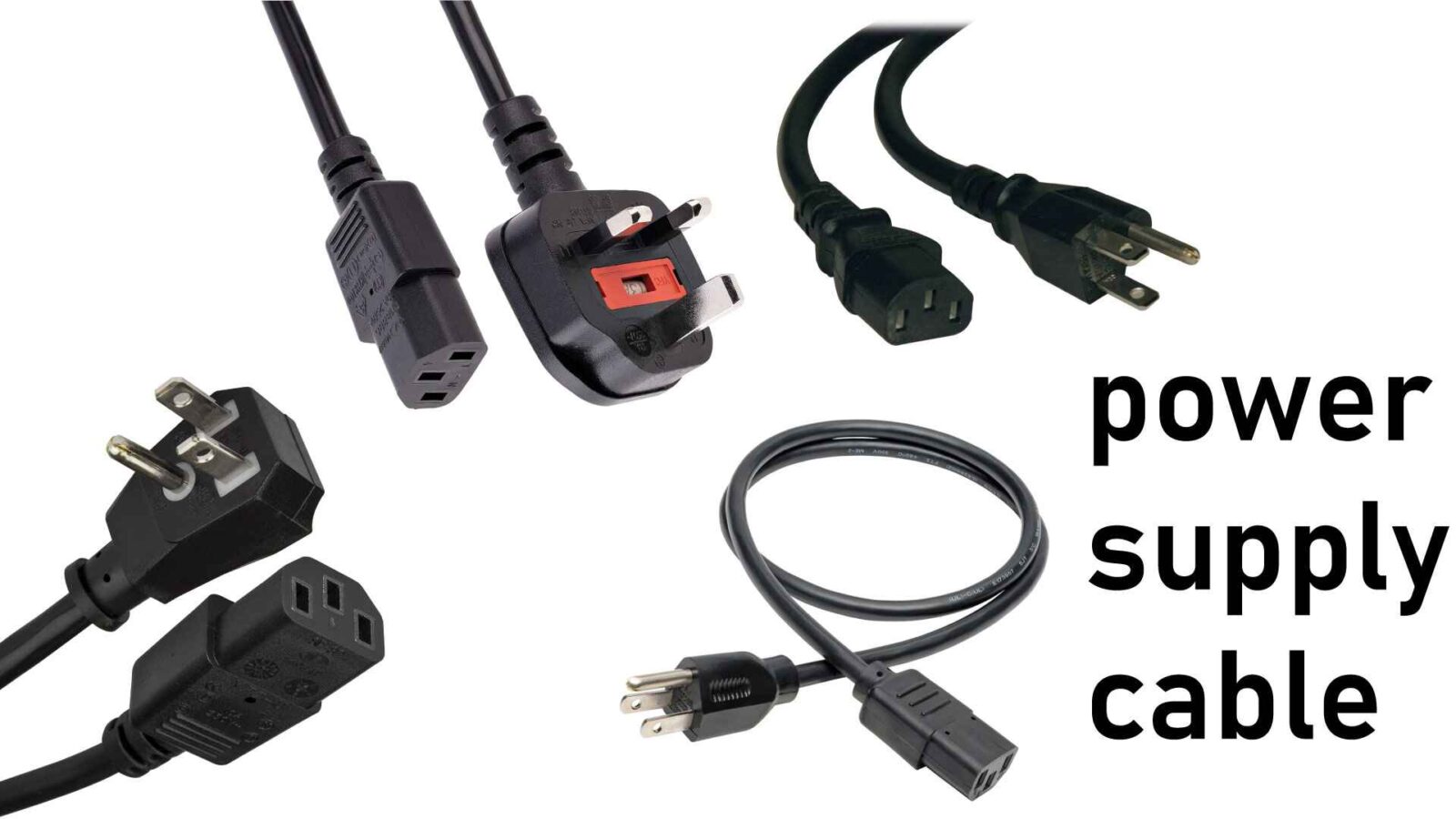
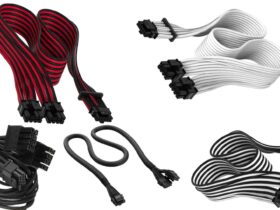
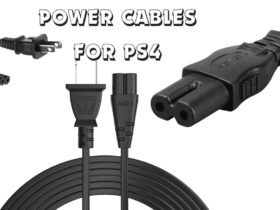
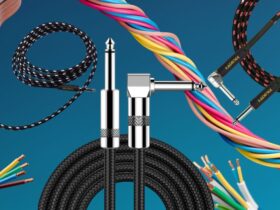
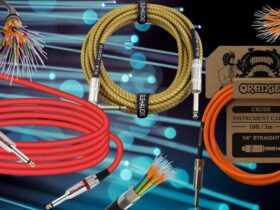
1 Comment